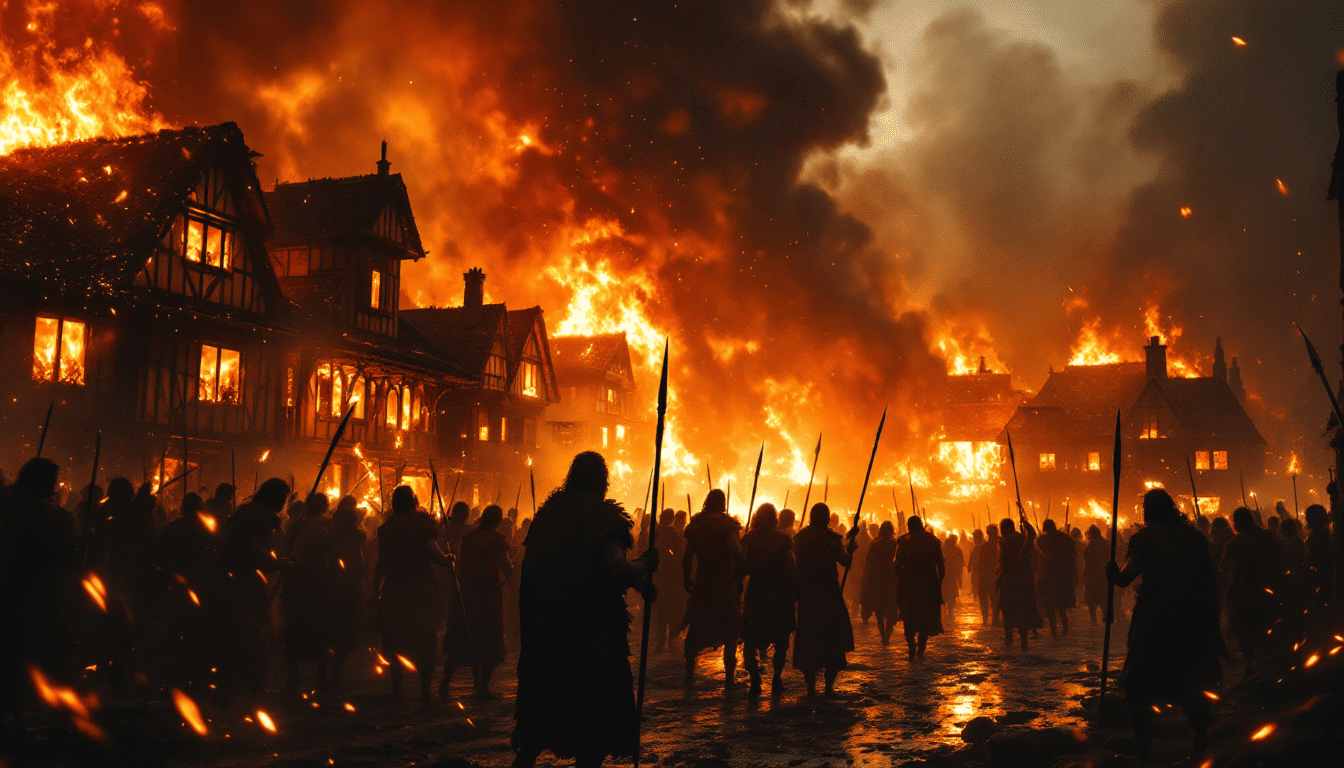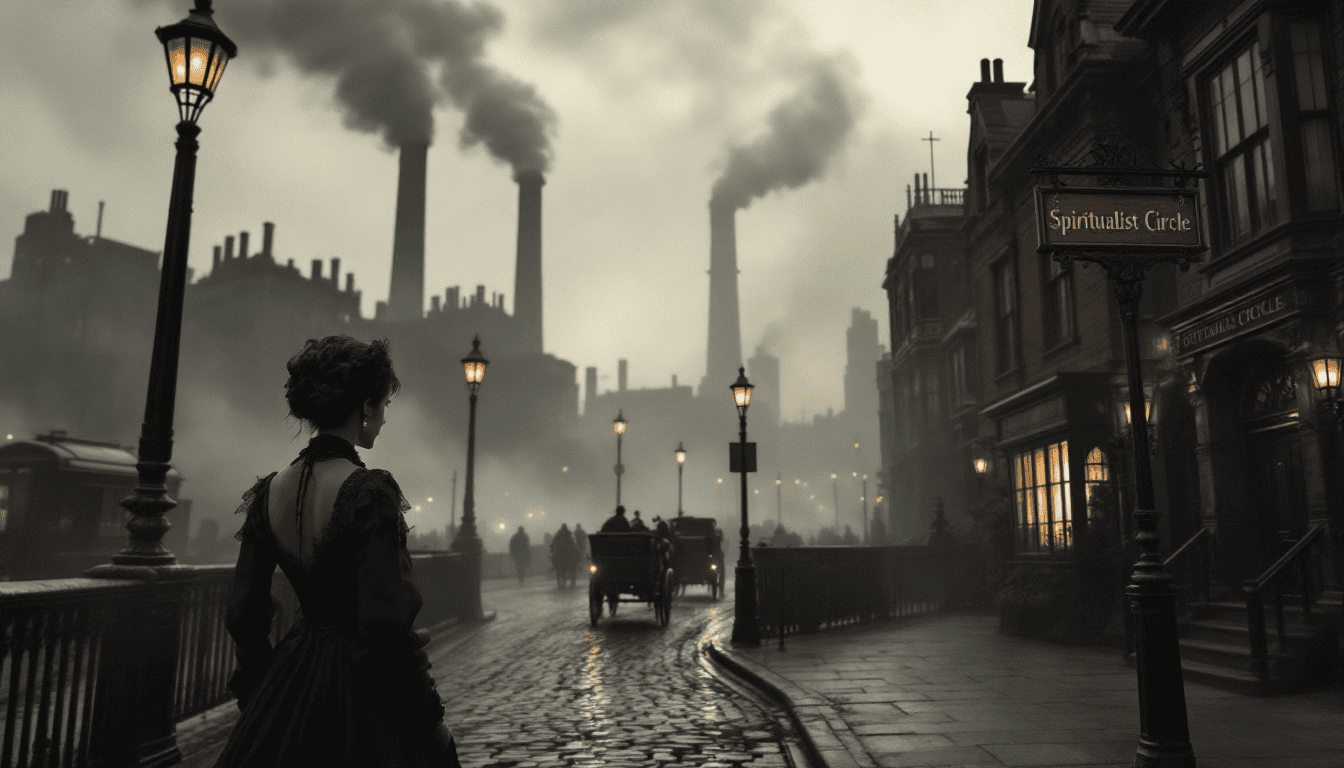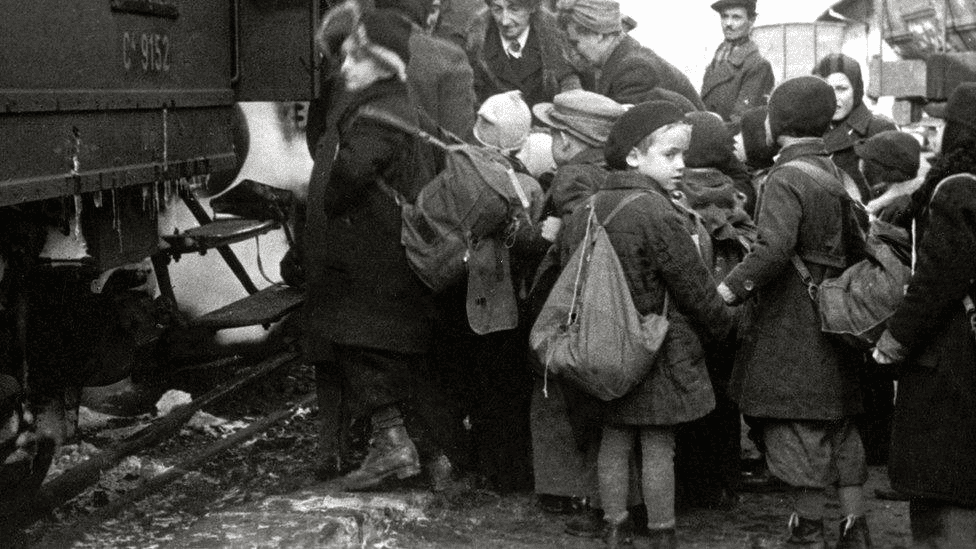Britain's Endless Cycle Of Uprisings, Riots, & Revolts
Parliament didn't spring from enlightened reason, it was forged in blood. For a thousand years, these islands burned with rebellion, civil war, and massacre. Today's political divisions aren't a modern disease. They're a reversion to form, the old fever returning us to who and what we always were.

Walk into Parliament and you enter a battlefield under truce. The green benches face each other at sword-length apart. Members still cannot wear armour in the chamber. The Serjeant-at-Arms carries a mace—a weapon—as symbol of authority. Every procedural quirk, every architectural detail, whispers the same truth: this place was built to contain violence, not to transcend it.
For the better part of a millennium, political disagreement in the Britannic Isles meant blood. Not metaphorical blood—actual corpses in streets, heads on spikes, towns burned, populations slaughtered. The peaceful transfer of power we take for granted? An evolutionary blink. A brief experiment. And if you listen carefully to the howling in our politics today, you can hear the old rhythms returning.
Rome, Boudica, and Vikings
Britain entered recorded history in violence. When Boudica rose in 60 AD, she wasn't protesting Roman taxation or petitioning for local autonomy. The Iceni queen wanted annihilation. Her husband, a client king, had died and left his kingdom jointly to his daughters and Emperor Nero. Roman officials responded by flogging Boudica and raping her daughters. They had miscalculated catastrophically.
She raised not just the Iceni but neighbouring tribes—tens of thousands united in fury. They fell upon Camulodunum (Colchester), slaughtering the inhabitants and burning the town to ash. The Roman Ninth Legion marched to intercept them and was destroyed. Londinium came next. The Roman governor evacuated the city, abandoning its inhabitants. Boudica's forces burned it methodically, killing everyone they found. Archaeologists still find a red layer of burned clay beneath London, marking where the ancient city died. Verulamium (St Albans) suffered the same fate.
Roman chroniclers claimed 70,000 dead, likely an exaggeration, but the archaeological record confirms wholesale slaughter. The Romans won eventually, at a battlefield whose location we've lost. Boudica took poison rather than submit. But she'd nearly driven Rome from Britain, and the province never quite recovered its confidence.
Two centuries later, Carausius proved a lesson British rebels would relearn forever: if you're going to betray the crown, do it properly. This Roman naval commander was charged with clearing the Channel of pirates. He did his job well—too well. Rumours spread he was keeping captured treasure rather than sending it to Rome. When Emperor Maximian ordered his execution in 286 AD, Carausius responded by declaring himself Emperor of Britain and northern Gaul.
This wasn't a pretender's fantasy. Carausius controlled the Channel fleet, Britain's garrisons, and productive territory. He minted coins showing himself as legitimate emperor, styled himself "Restorer of Britain," and held power for seven years. Rome sent invasion forces. They failed. Carausius fell finally to assassination by his own finance minister, Allectus, who ruled three more years before Roman forces reclaimed the province. But for a decade, Britain had been an independent empire. The template was set.
The Vikings came in 865 not as raiders but as conquerors. The Great Heathen Army—multiple warbands united under shared purpose—landed in East Anglia and began systematic conquest. Within months they'd toppled Northumbria, executing King Ælla by carving a blood eagle into his back (or so the sagas claim). East Anglia fell next, its King Edmund captured and shot full of arrows. Mercia fractured under the assault.
Only Wessex survived, and barely. Alfred—not yet "the Great"—fought a guerrilla campaign from Somerset marshes before clawing back territory. The peace treaty of 878 created the Danelaw: a vast region of eastern and northern England under Scandinavian law, where Danish jarls ruled and Norse replaced English as the language of power. Political violence had redrawn the map, creating a cultural division visible in place names and dialect today.
After the Conquest of 1066, William the Bastard (we sanitise him as "Conqueror") faced years of English resistance. The most persistent came from Hereward the Wake, an English landowner dispossessed by Norman redistribution. He established a base in the Isle of Ely—not an island but impenetrable fenland—and waged guerrilla war throughout the early 1070s. Norman cavalry and armoured knights meant nothing in the marshes. Hereward's rebels ambushed supply columns, burned Norman manors, and evaded pursuit.
William responded with characteristic brutality: he built a causeway through the fens, bribed Hereward's allies, and eventually forced capitulation. But the resistance had bought time, demonstrated William held England by sword alone, and provided a template for English rebels over coming centuries.
Three Centuries Of Bloodshed
Medieval England perfected factional warfare. The Anarchy began in December 1135 when King Henry I died crossing the Channel, his intestines reportedly exploding from bad lampreys. He'd forced his barons to swear fealty to his daughter Matilda. They swore. Henry was barely cold before they forgot.
Stephen of Blois—Henry's nephew—raced to London and seized the crown. Matilda invaded three years later with her husband Geoffrey of Anjou. What followed was eighteen years of civil war so comprehensively destructive it gave the era its name. No romantic notions of chivalry here. Barons switched sides with the seasons, auctioning their loyalty to whichever claimant offered more. Local warlords ruled their territories like petty kings, building unlicensed castles (sources mention 1,100 adulterine castles—"adulterine" because they weren't royal-sanctioned, they were bastard fortifications), torturing peasants for coin, burning rivals' lands.
Contemporary chroniclers wrote of Christ and his saints sleeping whilst England tore itself apart. The Anglo-Saxon Chronicle records:
Every powerful man built his castles and held them against the king... They levied taxes on the villages every so often, and called it 'protection money.' When the wretched people had no more to give, they robbed and burned all the villages... I neither can nor may tell of all the wounds and all the tortures they inflicted upon the wretched people of this land.
When the war finally sputtered out in 1153, it wasn't through decisive victory but exhausted compromise. Stephen would remain king; Matilda's son Henry would succeed him. The barons, rich from years of licensed banditry, kept their gains. The lesson learned: violence pays if you survive it.
That lesson echoed in 1215 when barons forced Magna Carta from King John at sword-point. John was an appalling king—"Softsword," they called him, and worse—who'd lost most of England's French territories and taxed his barons ruinously to fund failed campaigns to reclaim them. The barons weren't philosophers of liberty. They were armed thugs protecting their property rights.
They captured London in May 1215. John, facing civil war he'd certainly lose, met them at Runnymede in June and sealed Magna Carta. Within months both sides had reneged. The First Barons' War killed John (dysentery, probably) and brought French invasion before young Henry III made peace. The Second Barons' War in the 1260s saw Simon de Montfort—a French-born earl—rebel against Henry III, capture the king at Lewes, and rule England as de facto dictator for a year.
De Montfort summoned a parliament in 1265 not from democratic conviction but because he needed broader support in his civil war. He invited burgesses from towns and knights from shires—commoners—to join the barons. Parliament was born as a weapon, a way to mobilise support and legitimise rebellion. De Montfort died that same year at the Battle of Evesham, his body mutilated beyond recognition. But the weapon he'd forged survived.
The Peasants' Revolt of 1381 showed violence flowed upward too. A third poll tax in four years broke the patience of south-eastern England. Tens of thousands of labourers, artisans, and small landowners marched on London, burning tax records, executing royal officials. They weren't asking for reform. They wanted heads.
The Chancellor and Archbishop of Canterbury, Simon Sudbury, took refuge in the Tower of London. The mob broke in—someone had opened the gates—and dragged him out. They hacked off his head on Tower Hill, not in secret but as public spectacle. It took eight blows. The Treasurer died beside him. The young Richard II, just fourteen, met the rebels at Smithfield. Wat Tyler, their leader, made demands. He wanted abolition of serfdom, fixed low rents, and free use of forests.
Richard agreed to everything. Then Tyler was stabbed—accounts differ whether this was planned or spontaneous—and killed. The crowd wavered. Richard rode forward: "I am your captain, follow me." They followed him to dispersal. Then Richard broke every promise. Wat Tyler's head went on a spike. Hundreds hanged across the south-east. Order restored through terror.
Jack Cade tried again in 1450. Henry VI's government was spectacularly corrupt—the king was pious to the point of uselessness, his court faction enriching themselves whilst France collapsed and the treasury emptied. Cade, probably a minor gentleman of uncertain background, raised Kent on a platform of proper governance and punishment for corrupt ministers.
His forces—thousands strong—marched on London. They entered the city, executed the Treasurer (beheaded on Cheapside), occupied the city for days before withdrawing to Southwark. The government promised pardons and reform. Cade retreated. Then came the betrayal: pardon revoked, Cade declared traitor. He was killed fleeing through Sussex. His body was dragged back to London, beheaded, quartered. The pieces toured the realm as warning. Nothing changed.
Then came the Wars of the Roses—thirty years of dynastic slaughter so byzantine in its allegiances and counter-allegiances it reads like parody. It began in 1455 at St Albans when Richard, Duke of York, ambushed the king's forces in the streets. Henry VI—the same useless king from Cade's time—was wounded and captured. York claimed he sought not the throne but removal of bad advisors. Nobody believed him.
The war metastasised. Battles at Blore Heath, Ludford Bridge, Northampton, Wakefield where York died and his head was mounted on York's walls wearing a paper crown. His son Edward claimed the throne, won at Towton—28,000 dead in a snowstorm, the bloodiest battle ever fought on English soil—and ruled as Edward IV. Until he didn't. The Earl of Warwick—"the Kingmaker"—fell out with Edward, switched sides, restored Henry VI briefly before dying at Barnet. Edward returned, won at Tewkesbury, murdered Henry VI in the Tower, and ruled again until his unexpected death in 1483.
His brother Richard seized the throne from Edward's young sons, who disappeared into the Tower—murdered, almost certainly, on Richard's orders. Richard III ruled two years before Henry Tudor landed in Wales with a mixed force of French and Welsh troops, defeated Richard at Bosworth Field (Richard's circlet rolling under a hawthorn bush became legend), and established the Tudor dynasty.
This wasn't noble houses playing at war. Entire noble families were exterminated. The old aristocracy nearly destroyed itself, clearing space for the Tudors and their new men. Political violence as evolutionary pressure.
Even after Tudor consolidation, rebellion flickered. The Cornish marched on London in 1497—15,000 of them—protesting taxation for a Scottish war. Why should Cornwall pay for northern conflicts? They made it to Blackheath in South London before royal forces crushed them. The leaders hanged. The rank and file dispersed. But the rage lingered, waiting for another spark. Cornwall has never quite forgotten.
A Century Of Reformation Violence
Religion gave political violence fresh fuel and moral certainty. Henry VIII's break with Rome and dissolution of the monasteries between 1536 and 1541 wasn't a theological dispute—it was wholesale asset seizure. Monasteries owned perhaps a third of England's land. Henry wanted it. The destruction was systematic: buildings stripped, libraries burned, monks pensioned off or scattered, communities dependent on monastic charity abandoned.
The North rebelled. The Pilgrimage of Grace in October 1536 became the largest popular uprising in Tudor England. Thirty thousand rose across Yorkshire, Lancashire, and Lincolnshire. They weren't peasants exclusively—gentry led, clergy supported, townsmen joined. They took York. They held an entire region. Robert Aske, a lawyer, led them under religious banners showing the Five Wounds of Christ.
They wanted the monasteries restored, heretical bishops removed, northern voices heard. Henry responded with characteristic ruthlessness: he negotiated, made vague promises, convinced them to disperse. Then came the reprisals. Show trials. Executions for treason. Aske was hanged in chains from York's walls and left to starve. Abbots were hanged outside their ruined monasteries. Hundreds died. The North learned to fear its king and keep its mouth shut.
Thirteen years later, the West Country exploded. Edward VI's government—the king was a boy, the regime violently Protestant—imposed a new English Prayer Book in 1549. Devon and Cornwall rose against it. These were Catholic regions where people wanted the Latin mass, not vernacular services. But it went deeper: this was the West Country rejecting London's interference, asserting regional identity through religion.
Humphrey Arundell, a Cornish gentleman, led perhaps 6,000 rebels. They besieged Exeter for weeks. The government sent Lord Russell with Italian mercenaries and German landsknechts—foreign troops to kill English rebels. Thousands died when royal forces finally broke them at Sampford Courtenay and Clyst Heath. The West Country never rose again.
That same summer of 1549—the regime was falling apart—East Anglia erupted in Kett's Rebellion. Robert Kett, a prosperous tanner, led perhaps 16,000 in protest against land enclosure. Landlords were fencing common land, evicting tenants, consolidating holdings. Kett's rebels weren't revolutionaries—they wanted good governance, the enforcement of existing laws against enclosure, and protection of traditional rights.
They held Norwich, England's second city, for six weeks. Kett established a quasi-government under an oak tree, hearing petitions and dispensing justice. Then the Earl of Warwick arrived with an army including German mercenaries. The rebels faced cavalry with pitchforks and bills. Three thousand died. Kett hanged from Norwich Castle's walls. His brother from the church tower in nearby Wymondham.
The Northern Rebellion of 1569 showed religious factions hadn't surrendered. Catholic nobles—the Earls of Northumberland and Westmorland—tried to restore Mary Queen of Scots (imprisoned by Elizabeth) and return England to Catholicism. They rose in November, occupied Durham Cathedral, celebrated Mass, and marched south with several thousand men.
They never seriously threatened Elizabeth's regime. Support didn't materialise. The southern march stalled. They retreated, dissolved, fled. Elizabeth's reprisals were savage: some 600 executions across the North, most by hanging. A dozen or more hanged in every market town as example. The Northern earls fled abroad. Their titles attainted, their lands seized. The North was pacified through terror.
Final Revolution And Regicide
The English Civil War was the logical conclusion of centuries of factional violence. When Charles I and Parliament finally came to blows in 1642, they were following a script written over generations. Charles believed in divine right absolutism. Parliament—representing the gentry, merchants, and emerging middle sorts—wanted control over taxation and religion. Both sides negotiated until negotiation became impossible.
The war killed perhaps 200,000 in England alone—a higher percentage of the population than the First World War. Brothers fought brothers. Towns endured multiple sieges. Armies marched back and forth across the country, requisitioning, burning, killing. Naseby in 1645 decided the military outcome: the New Model Army destroyed the royalist field force. But political resolution took four more years of confusion, negotiation, and betrayal.
In December 1648, Colonel Pride's soldiers prevented moderate MPs from entering Parliament—"Pride's Purge"—leaving only radicals prepared to try the king. They did. On 20 January 1649, Charles stood trial for tyranny and treason. He refused to plead, denying the court's jurisdiction. They convicted him anyway.
On 30 January, a scaffold stood outside Whitehall's Banqueting House. Charles wore two shirts so he wouldn't shiver from cold and appear afraid. He prayed. He positioned his head. The executioner struck once and severed it clean. Someone in the crowd groaned. This was the ultimate political violence—regicide. Not assassination or battlefield death, but judicial execution of an anointed monarch.
The republic didn't last. Cromwell ruled as Lord Protector, then his son Richard briefly held the office. Cromwell's Major-Generals ruled England as military occupation—the country divided into districts, each overseen by an army officer enforcing godliness and taxing royalists. When Richard Cromwell resigned in 1659, the regime collapsed. Exhausted Englishmen invited Charles II home in 1660. But the violence hadn't finished.
The Monmouth Rebellion of 1685 saw Charles II's illegitimate son raise the West Country against his uncle, James II. Monmouth—handsome, Protestant, popular—landed at Lyme Regis in June with 82 men and claimed the throne. The West Country, Protestant and resentful, rose for him. Thousands joined. But they were poorly armed, trained only in militia drill, facing professional soldiers.
It ended at Sedgemoor on 6 July 1685 with savage efficiency. Monmouth's night attack failed. His forces broke. Some 500 rebels died in battle, more in pursuit. Monmouth fled, was captured hiding in a ditch, and begged for his life. James refused mercy. The executioner botched the job spectacularly, requiring five blows to sever Monmouth's head, then finishing with a knife.
Judge Jeffreys toured the West Country in the Bloody Assizes, trying hundreds of rebels. He hanged perhaps 250, transported 800 more to West Indian plantations as slaves. Bodies swung from gibbets across Somerset and Dorset. The West Country, always rebellious, was terrorised into submission.
Three years later, James II fled and William III invaded in the "Glorious Revolution." Bloodless in England—James simply ran—but soaked in blood elsewhere. The Glencoe Massacre of 1692 saw the Campbell clan slaughter the MacDonalds under trust—38 killed, women and children dying of exposure after their homes were burned—punishment for delayed loyalty oaths to William. Highland politics: always personal, always lethal, always about clan and kinship as much as principle.
The Last Throws Of Chaos
The Jacobite risings of 1715 and 1745 were civil wars by another name. The Hanoverian succession—importing German George I because he was Protestant—enraged Scottish Highlanders and English Catholics. In 1715, the Earl of Mar raised the Highlands for James Stuart, the Old Pretender. Thousands marched south. They reached Preston in Lancashire before Hanoverian forces defeated them. The rebellion sputtered out. Mar fled. Leaders hanged or transported. The Highlands settled into sullen resentment.
In 1745, Charles Edward Stuart—"Bonnie Prince Charlie," the Young Pretender—tried again. He landed in Scotland with seven men. Within weeks he'd raised the Highlands, taken Edinburgh (minus the Castle), and smashed a government army at Prestonpans. His forces marched into England, reaching Derby—125 miles from London—in December 1745.
London panicked. There was a run on the Bank of England. George II prepared to flee. Then Charles's commanders insisted on retreat. The Highlands wouldn't march further. They turned back. The Duke of Cumberland pursued them, caught them at Culloden in April 1746, and destroyed them in less than an hour. Highland charges broke on artillery and disciplined musket fire. Then came the slaughter: wounded bayoneted where they lay, prisoners shot, the pursuit extending for miles.
Cumberland—"Butcher Cumberland" thereafter—spent months pacifying the Highlands. Executions, transportations. Banning of tartan and Highland dress. Disarming of the clans. Destruction of the clan system itself. Political violence as cultural genocide. The Highlands never rose again.
Ireland's rebellion in 1798 showed the same patterns at savage scale. Influenced by Revolutionary France and American independence, the Society of United Irishmen planned coordinated risings across Ireland. Some wanted independence, some wanted reform, all wanted an end to Protestant Ascendancy rule.
The risings erupted in May 1798, disjointed and poorly coordinated. Wexford saw the worst fighting: rebels held the county for weeks, massacre and counter-massacre marking both sides. Wexford town saw 200 Protestants piked to death on the bridge. Government forces burned villages suspected of harbouring rebels. Vinegar Hill in June saw perhaps 20,000 rebels make a stand; artillery broke them, cavalry pursued, thousands died.
Small French expeditions landed too late. The risings collapsed. Perhaps 30,000 died in months of violence. Ireland's wound deepened, the Union of 1801 imposed, and resentment stored up for the next century's conflicts.
Even in the nineteenth century, political violence smouldered. The Gordon Riots of 1780 tore through London for days—ostensibly anti-Catholic, actually anarchic mob fury against a Catholic Relief Act. For a week, the mob ruled London. They burned Catholic chapels, sacked houses, freed prisoners from Newgate, and attacked the Bank of England. The army killed perhaps 300 rioters restoring order. Another 25 hanged afterwards. The largest urban riots in British history.
The Swing Riots of 1830 saw southern England erupt in the last great rural rising. Threshing machines threatened winter employment. Labourers responded by burning them. Rick-burning, threatening letters signed "Captain Swing," attacks on Poor Law officials. Troops deployed across the countryside. Hundreds transported to Australia. The countryside pacified. But the rage—over mechanisation, enclosure, the loss of traditional rights—never quite died.
Back To The Past Again
Parliament emerged from this bloodshed not as its opposite but as its refinement. The building itself is a castle—fortified, defensible, symbolic. The rituals are combat sublimated: divisions where MPs physically separate to opposite sides, whips cracking discipline like officers before battle, the Speaker controlling debate like a referee preventing actual violence. The myth of two sword-lengths apart—close enough to debate, too far to stab.
British political culture makes sense only as evolved warfare. The party system? Warlord factions learning to share power. Elections? Periodic truces where factions count supporters instead of corpses. Parliamentary procedure? Rules of engagement to prevent the chamber becoming an abattoir. The mace? A weapon, present to remind everyone what we're containing.
We think ourselves civilised because we haven't beheaded a king lately or burned towns in factional wars. We point to other nations and call them divided, tribal, violent. But scratch British politics and the old patterns emerge immediately. The Brexit referendum wasn't a policy debate—it was tribal warfare by other means, regions and classes weaponising their votes, rhetoric borrowed from civil conflicts past. "Traitors," "saboteurs," "enemies of the people"—the language of civil war.
The fury in contemporary politics, the absolutism, the refusal to compromise—these aren't aberrations. They're reversions. For most of British history, political disagreement meant your house burned and your head decorated a pike. Parliament was invented to contain violence, not eliminate it. The chamber is a fireplace where factional rage can burn without consuming the whole structure.
And when you hear modern commentators lament our "unprecedented divisions," smile quietly. There's nothing unprecedented here. This is Britain returning to factory settings. The medieval baron switching sides mid-battle, the Tudor rebel marching on London, the Civil War soldier uncertain which cause deserves death, the Jacobite clansman charging into grapeshot—they'd recognise our politics instantly.
The long experiment with genteel consensus, the post-war settlement, the idea politics could be managed by reasonable people in suits making incremental adjustments—all of it was the historical anomaly. Violence and faction are the norm. Compromise and cooperation are fragile achievements, constantly threatened, requiring exhausting effort to maintain.
Parliament's great achievement isn't ending political violence. It's converting battlefield slaughter into procedural combat, replacing corpses with vote counts, turning execution into electoral defeat. The rage remains. The factions endure. The fires burn.
But now we burn them in a fireplace, and mostly, the house doesn't come down.
With thanks to Alex Coppen for the idea.




